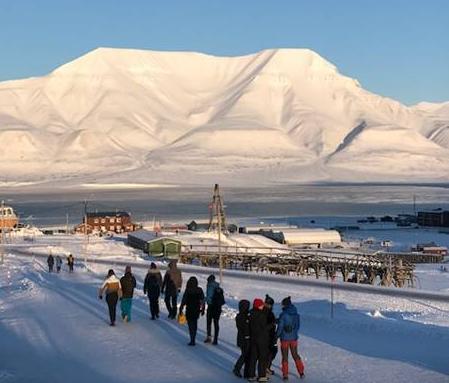
Lisbeth Iversen is back in Svalbard working with local communities, Arctic industries and stakeholders.
In March I once again went on a new field trip to Longyerbyen, Svalbard to meet with local decision makers, inhabitants, researchers and other actors as a part of my work in the INTAROS project.
Workshop on the 7th of March
INTAROS colleagues working to enhance community-based observing programs for participatory research and capacity-building (WP 4) were due to host a Cruise Expedition Monitoring Workshop at University Centre in Svalbard (UNIS), Longyerbyen, on the 7th of March.
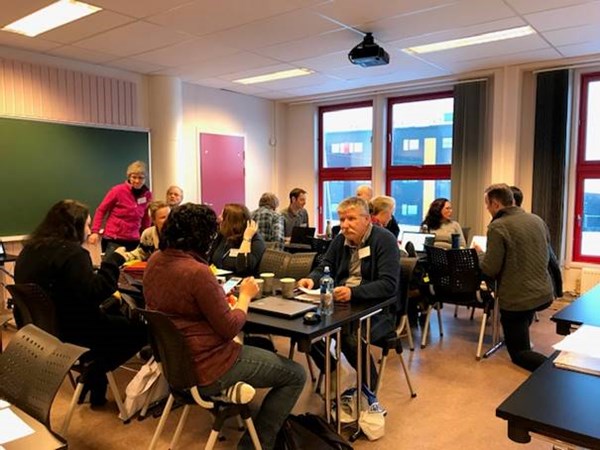
The intention was to facilitate a workshop for improving and expanding the environmental monitoring efforts by cruise ships in the Arctic, with the aim to jointly develop a cruise expeditions’ Arctic environmental monitoring program comprising dedicated citizen science programs. We also hoped for an agreement on an Arctic cruise expeditions’ monitoring program to be tested around Svalbard and in the Arctic during 2019. The output of the interesting and engaging workshop will soon be shared through a workshop report.

Dialogue seminar on the 8th of March
A dialogue seminar was planned for 8th March at UNIS, Longyearbyen, to coincide with the International Womens Day. We invited local actors we have worked with in previous workshops in Longyerbyen.
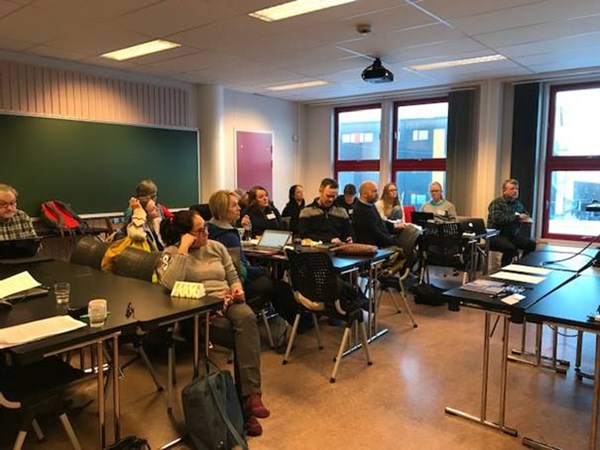
One of the local participants in the workshop and dialogue seminar was Hilde Fålun Strøm, a woman living in Longyerbyen, Hilde came to Svalbard in 2003, and has stayed her since. She has been taking part in the research school arranged by UAK and INTAROS in December 2018, in workshops, and lately, on the 7th and 8th of March, sharing from her work at Hurtigruten over many years, and her experience as an inhabitant of Longyerbyen, under changing weather conditions. She will be spending 9 months, from august 2019 until may 2020, overwintring at Bjørnøya, at the little cottage Bamsebu in the Van Keulen-fjord, together with her Norwegian-born Canadian friend, Sunniva Sørby. They launched the project; « «Hearts in the ice» in October last year, just before we met in Longyerbyen in November.
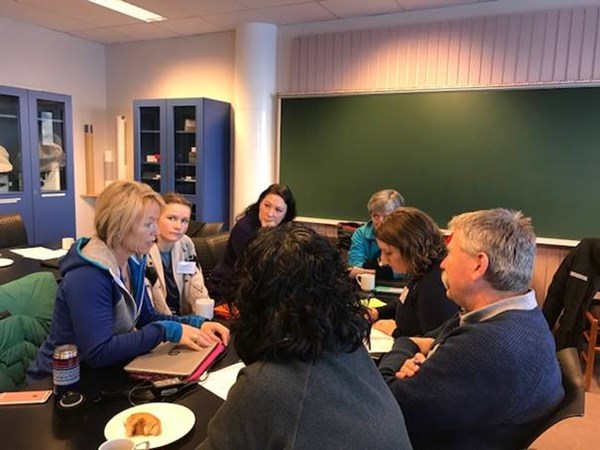
Hilde Fålun Støm, to the left, sharing from her work at Hurtigruten, and from her life as an inhabitant in Longyerbyen for 23 years.
They will be collaborating with researchers and NASA, doing citizen science while they are there. But they will also be communicating with schools, teaching abut the life there, sharing important messages about climate and nature. You can follow these courageous women here.
Through dialogue between key actors at Svalbard, we wanted to discuss opportunities for the future of Longyerbyen and Svalbard, and strengthen cooperation to make better use of "citizen science" for sustainable development in Svalbard. We also wanted to discuss how to make socially relevant information available, and ensure the best possible development of the community, business and tourism.
The day started with an introduction of INTAROS and the initiated work on "community based observation / monitoring" by Finn Danielsen, NORDECO and myself. We revisited Thursday's workshop with AECO operators and citizen science programs by Ilja Leo Lang, AECO and Michael Køie Poulsen, NORDECO in discussion with the other participants.
The second session of the day addressed the future, asking, "How can we contribute to sustainable management and development in Svalbard and in the region?" We looked more closely at opportunities and needs for the actors involved, and for the local community. We had very interesting discussions on how to balance the wish and hope for sustainable development and possibilities for jobs, development and tourism, with the fact that there is a need for a reduction of emissions, and to adopt to climate change.
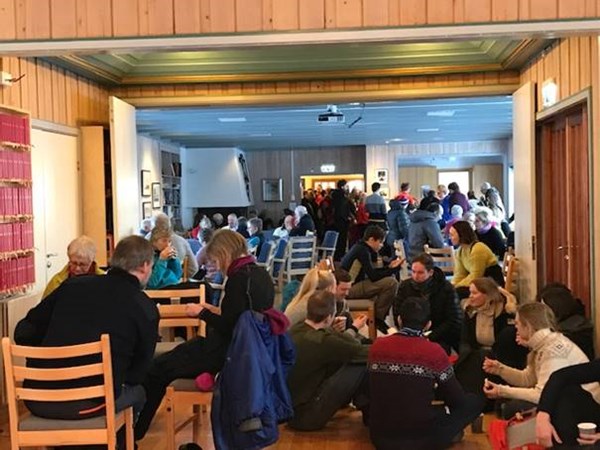
Mining-activity has been one of the most important industries in Svalbard, and yet, now it has almost come to an end, due to international coal prices, as well as to political decisions and climate agreements. Still, local heating is based on a coal-burning power-plant, and most of the vehicles run on diesel or petrol. There are some electric vehicles, but with the cold climate and changing weather conditions, there are challenges, even though development in this field is moving rapidly. Public transport has been discussed as an important way of being able to receive all the tourists that are coming to visit, and to make it possible for the local actors to reduce their car use. Lately, autonomous transport, a bus without a driver, was tested in Longyerbyen.
The young people are asking for change, and the possibility of Svalbard being a showcase for green solutions. The local chamber of commerce, represented in the dialogue seminar, explained that they were concerned with the decline of local industry, but first of all, they needed clear political will and decisions concerning future possibilities and development. Due to lack of holistic development plans, it feels like Svalbard has become “the Island of controversy”, he argued. The coal-mining industry will come to an end, but yet the local actors are depending on heating from a coal-burning power-plant. They would like to be testing out green solutions, solar panels etc., but there is no funding for this yet. Hopefully, the business and development plan for Svalbard, expected to be launched by the government very soon, may give the local actors the possibility to be in the forefront with solutions for the future, together with the researchers in the field.
At the same time, Svalbard is experiencing tremendous climate change. In Aftenposten, a Norwegian Newspaper, we could read on the 21.st of March that the Arctic and Svalbard have become an involuntarily laboratory of climate change. The global warming is happening much faster here, than in other parts of the world, according to a new report:
«A new report compiled by Norway’s leading climate researchers predicts much warmer temperatures on the Arctic island group of Svalbard in the years ahead, with more rain, flooding and landslides expected. The report has been described by experts as both “very dramatic” and among the “most frightening” to be released yet. Fortunately, there is still hope to avoid the greatest transformation and save the life-giving ice if the intentions of the Paris Agreement are followed up.
We will summarize the conversations from our dialogue seminar in a report, which we will share with all the participants afterwards. We hope the report can form the basis for applications for projects within relevant topics that we highlighted.
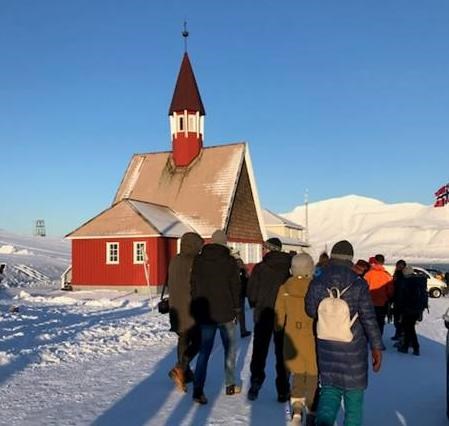
The sun came back to Longyerbyen
On the 8th of March, on the International Womens Day, I took the time to join the locals in a walk to see the sun coming back on the stairs of the former hospital. It was a fantastic experience to celebrate this with the local community, both outside in a beautiful, but very cold weather, and inside in the church, where people gathered to celebrate the day together.
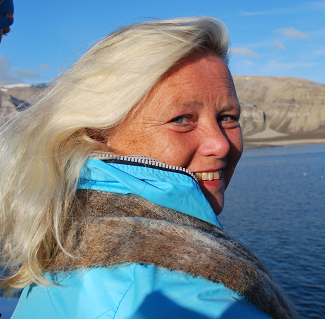
25/03/2019 Lisbeth Iversen, NERSC